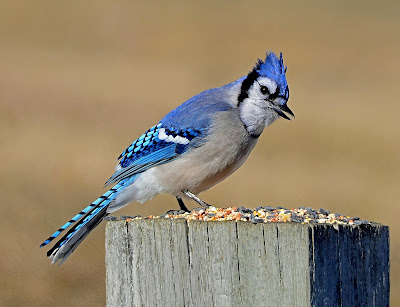Taking rhododendrons' temperature
 |
| Rhododendrons at 23 degrees by Sue Pike |
Rhododendrons make incredibly accurate living thermometers. When I went for a walk this morning, it felt cold, and I figured it was at least in the teens, but the rhododendron leaves were drooping, not curled. I realized I was being a baby, it had to be warmer than 25 degrees Fahrenheit.
Rhododendron leaves respond to the cold, first by drooping and then by curling up - this is called thermonasty. When temperatures are above freezing, typical rhododendron leaves will be flat and oriented horizontally to the ground (presumably to collect as much sunlight as possible). As temperatures drop, the leaves follow suit. When temperatures fall below freezing, the leaves start to droop but remain flat. At 25 degrees F, the leaves start to curl and by 20 degrees F, they are as tightly curled as they can get.
The most common native species of rhododendron in New England is great rosebay (Rhododendron maximum). That said, R. maximum is considered rare and classified as a threatened species in Maine, Vermont, New Hampshire and Massachusetts. They are much more common in the southern Appalachians where they blanket the understories of moist forests and hemlock swamps with their deep green leathery leaves and showy pink to white flowers.
Rhododendrons seem to do much better (judging by their numbers) further south, according to Neil Jorgenson in an article on how to grow rhododendrons (published in 1999 by the Journal of the American Rhododendron Society): "Among the scattered stands of Rhododendron maximum growing wild in New England, a few hardy disjunct colonies survive into the semiarctic winter conditions of mountainous northern New Hampshire and Maine. In the White Mountains, R. maximum grows improbably, along with mountain laurel, on the slopes of Mt. Chocorua. In Maine, an even more northerly stand of R. maximum, perhaps now consumed by deer, has been reported from the vicinity of Kingfield, where minimum average winter temperatures must reach close to -30 F (-34 C)."
The vast majority of rhododendrons you'll see around here are the varietals planted as the suburbs spread throughout New England and homeowners looked for hardy, evergreen shrubbery. Azaleas, which are in the same genus as rhododendrons, are also commonly planted shrubbery. Azaleas lose their leaves in winter, the larger-leaved rhododendrons don't. "Why?" you might ask.
Leaf loss in temperate climates such as ours is a strategy employed by deciduous plants to prevent water loss from pores in the leaves (stomata) during the incredible drought of a typical winter when most available water is frozen. Plants that retain their leaves during winter usually have small leaves to minimize surface area with waxy coatings and stomata that close when it gets too cold or dry.
Unlike typical evergreen pine tree needles, rhododendrons have big leaves - that's a lot more surface area from which to lose water. I had always assumed that the leaf-rolling of a rhododendron leaf protects from desiccation by closing and protecting the stomata (which are located on the underside of the leaf). It turns out this might not be true. According to Dr. Erik Nilsen (Why Do Rhododendron Leaves Curl?), the stomata are always closed in cold weather - it has nothing to do with drooping or curling of the leaf. The drooping is more likely (though this isn't proven) a way to protect from the thawing that can occur on a sunny winter day. When the leaf is held horizontally and flat it will absorb solar energy and heat up and thaw, then refreeze during the dark of night. These rapid freeze and thaw cycles can damage and eventually kill the cells in the leaf. By drooping and curling the leaf, it is probably protecting itself from too much sun - opposite of what you'd think it would want to do.
In fact, if you want to protect your rhododendrons from the ravages of winter, many experts suggest shading the leaves to prevent sun damage. If you want to see some awesome giant rhododendrons in a more natural setting than your backyard, check out Rhododendron State Park in southwestern New Hampshire. And if you want to know how cold it is, visit your nearest rhododendron.
Susan Pike, a researcher and an environmental sciences and biology teacher at St. Thomas Aquinas High School, welcomes your ideas for future column topics. She may be reached at spike3116@gmail.com. Read more of her Nature News columns online.



Comments
Post a Comment